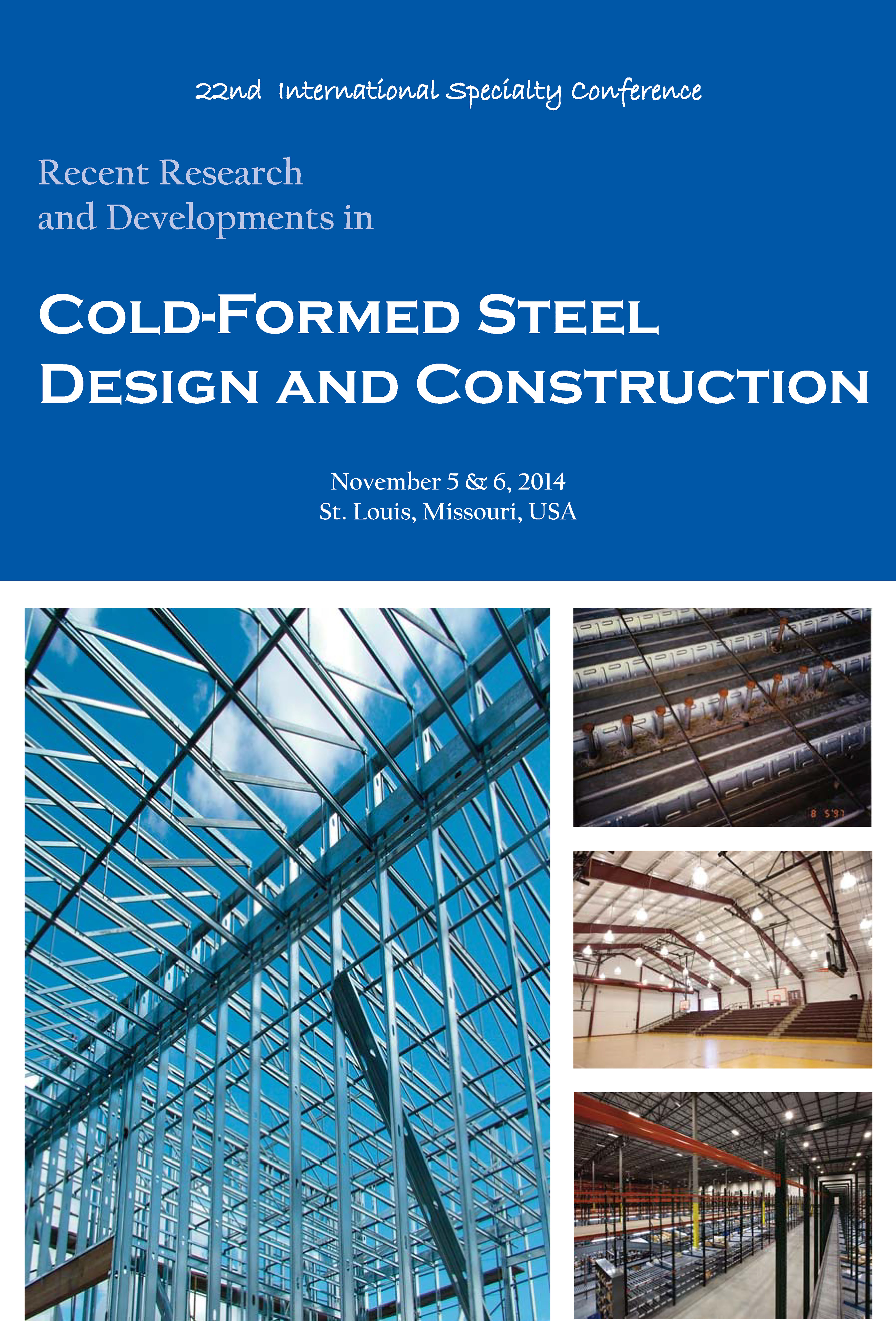Session Dates
06 Nov 2014
Abstract
Land subsidence phenomenon due to ground water withdrawal is a current problem in many places around the world, particularly in the shallows of Mexico. This causes ground differential settlements that affect structures, mainly dwellings and buildings based on reinforced concrete and masonry. Eventually, these structural materials do not exhibit an adequate performance beyond a certain level of angular distortion. This work presents the results about a study regarding the performance of thin-walled cold-formed steel wall frames with different sheathing systems affected by angular distortions simulating ground differential settlements due to land subsidence. The wall frames are composed by vertical (studs) and horizontal elements (tracks), with different sheathing systems: polystyrene, OSB, gypsum and calcium silicate. By means of experimental testing of wall frames subjected to monotonic lateral loads, the rotational stiffness was obtained for the wall frames with polystyrene. Likewise the rotational stiffness of the other wall frame systems was calculated based on the data provided by other author’s publications. On the other hand, by means of numerical simulation, all the wall frame systems were modeled in structural analysis software, calibrating them based on the rotational stiffness. Also, the moment-rotation curves were calculated for the studs and tracks based on the direct strength method. A non-linear static pull down analysis was performed producing several degrees of angular distortion simulating ground settlements for all the wall frames sheathing systems. With the data acquired fragility curves were calculated according three levels of damage for the wall frames with different sheathing system.
Department(s)
Civil, Architectural and Environmental Engineering
Research Center/Lab(s)
Wei-Wen Yu Center for Cold-Formed Steel Structures
Meeting Name
22nd International Specialty Conference on Cold-Formed Steel Structures
Publisher
Missouri University of Science and Technology
Document Version
Final Version
Rights
© 2014 Missouri University of Science and Technology, All rights reserved.
Document Type
Article - Conference proceedings
File Type
text
Language
English
Recommended Citation
Hernández-Castillo, Luis A.; Ortiz-Lozano, Jose A.; Hernández-Marín, Martin; Pacheco-Martínez, Jesús; Zermeño-deLeón, Mario E.; Soto-Bernal, Juan J.; Ramos-RuizFlores, Jorge; and Soto-Zamora, Miguel A., "Fragility Curves for Thin-Walled Cold-Formed Steel Wall Frames Affected by Ground Settlements Due to Land Subsidence" (2014). CCFSS Proceedings of International Specialty Conference on Cold-Formed Steel Structures (1971 - 2018). 1.
https://scholarsmine.mst.edu/isccss/22iccfss/session12/1
Fragility Curves for Thin-Walled Cold-Formed Steel Wall Frames Affected by Ground Settlements Due to Land Subsidence
Land subsidence phenomenon due to ground water withdrawal is a current problem in many places around the world, particularly in the shallows of Mexico. This causes ground differential settlements that affect structures, mainly dwellings and buildings based on reinforced concrete and masonry. Eventually, these structural materials do not exhibit an adequate performance beyond a certain level of angular distortion. This work presents the results about a study regarding the performance of thin-walled cold-formed steel wall frames with different sheathing systems affected by angular distortions simulating ground differential settlements due to land subsidence. The wall frames are composed by vertical (studs) and horizontal elements (tracks), with different sheathing systems: polystyrene, OSB, gypsum and calcium silicate. By means of experimental testing of wall frames subjected to monotonic lateral loads, the rotational stiffness was obtained for the wall frames with polystyrene. Likewise the rotational stiffness of the other wall frame systems was calculated based on the data provided by other author’s publications. On the other hand, by means of numerical simulation, all the wall frame systems were modeled in structural analysis software, calibrating them based on the rotational stiffness. Also, the moment-rotation curves were calculated for the studs and tracks based on the direct strength method. A non-linear static pull down analysis was performed producing several degrees of angular distortion simulating ground settlements for all the wall frames sheathing systems. With the data acquired fragility curves were calculated according three levels of damage for the wall frames with different sheathing system.



